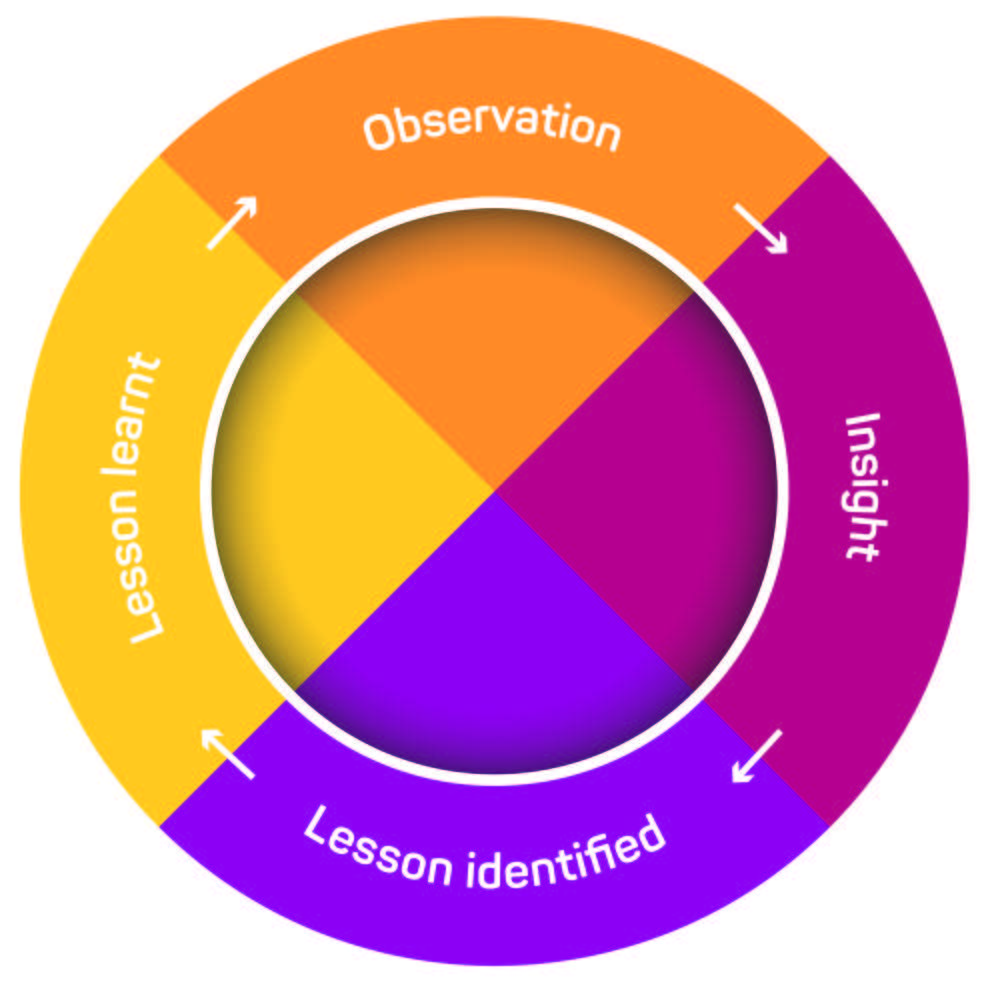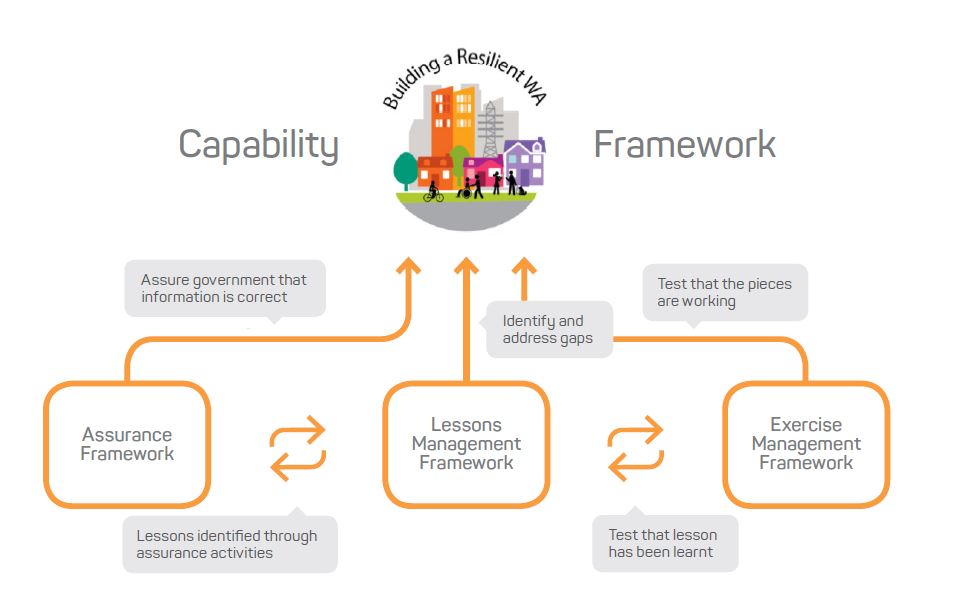This case study describes how the Western Australian Office of Emergency Management developed its emergency management assurance and lessons management frameworks. Their relationship with the Capability Framework underpins successful implementation.
The connection between capability, assurance, lessons management and exercising is, in our view, quite innovative. Strategic decisions create better prepared and more resilient communities. The capability framework provides the context and currency for this decision making.
Following devastating bushfires that destroyed the township of Yarloop during January 2016, the Western Australia Government appointed a Special Inquirer, Mr Euan Ferguson, to review the management of the fire response. Crucially, the review also considered what has been learnt from previous major bushfires.1
The narrative to this point is one heard before: An emergency occurs, the incident is reviewed and recommendations are made. Agencies work to implement the recommendations. Recommendations can be tactical or strategic, simple or complex. Difficulties or debates may arise that relate to research, funding or legislative change. This process is repeated following the next emergency event.
New recommendations may add complexity where they duplicate or contradict the previous set. Further, because a new implementation team is established, the momentum of implementing the new recommendations overwhelms the previous, which (unofficially) becomes a lesser priority. Once another incident happens... the cycle continues.
This was the position in Western Australia ahead of the Ferguson review in 2016.
Puzzle pieces
Assurance
The government response to recommendation 1 of the Ferguson report was to create an assurance function for emergency management in Western Australia.
With little precedence of emergency management assurance frameworks nationally or internationally, we undertook considerable research and consulted with major stakeholders; 18 organisations in the first round of face-to-face consultation. We also reached out to the Queensland and Victorian Inspectors-General of Emergency Management for inspiration and started planning for an assurance framework.
The WA Emergency Preparedness Report2 became central to the assurance concept. An assurance framework could improve the Western Australian Government’s confidence in the state’s preparedness by increasing the robustness and reliability of the self- reported information that informs the report.
Lessons management
Ferguson’s criticism of the lack of systemic monitoring of recommendations from previous major incident reviews3 allowed us to pause and evaluate how incident recommendations were managed.
The Ferguson review suggested that the Emergency Preparedness Report include the status of outstanding recommendations.4 As such, we reviewed the status of the 118 unresolved, historical items in addition to the 40 new matters listed in the Ferguson review.
As we processed the seven-plus years of recommendations we identified issues to be resolved, such as the lack of a tracking process; recommendations that are duplicated, vague or unspecific; and a lack of prioritisation. We determined that the way to solve these problems was to map the recommendations to our capability framework and use it to rationalise and prioritise. The alignment with the capability framework also allowed us to use a common language and share learning.
The capability framework describes the skills and knowledge needed to make Western Australia safer, more prepared and more resilient to emergency events. However, it purposefully does not describe how an organisation should fulfil those capabilities. As such, agencies can leverage their unique culture and expertise to achieve improved outcomes rather than simply implementing an externally controlled process.
Rationalising the historic recommendations provided two realisations. First, what we were calling ‘lessons management’ was simply recommendation tracking. Second, current recommendations are as much a cage as they are a catalyst. By this we mean that some of the outstanding recommendations were simply too restrictive, as written, to be implemented or they did not work for an organisation’s skills and operational requirements. They do not reflect the capability framework’s emphasis on flexibility and innovation.
In order to shift the focus from recommendations to lessons, we devised a lessons management process based on the well-accepted Observations, Insights, Lessons (OIL) methodology.5 We amended OIL to OILL: the extra ‘L’ highlights that lessons must be learnt, not simply identified (Figure 1).

Figure 1: The Western Australia Lessons Management Process.
Observations are objective and come from a range of sources. Observations can be beneficial (things to keep doing or do more of) or remedial (things to do differently or to do less of).
Insights look closely at the observations and investigate issues. For example, liaison with district emergency management committees gathers further observations, considers the impact on different regions and seeks consensus for whether change is needed.
Lesson identified evaluates the insight through the lens of the capability framework. This highlights whether or not the sector meets the desired capability target. A lesson identified contains enough context to clarify the intent of the lesson and the authority to undertake actions to implement. It is important that specific measures are set to evaluate implementation.
Lesson learnt occurs when there is demonstrated behaviour change.6 To verify that the agreed measures have been met and that the lesson has actually been learnt, a robust checking process is required. There is a wide range of activities that can perform this checking function (such as audits or post-incident reviews). It is our view that exercising plays an important evidentiary role.
Critical to the success of the OILL model is the involvement of agencies. Where a capability gap is found, the relevant agencies must be involved to determine the best approach to resolve it. It is important that decisions focus on the best outcomes and permit innovative solutions, even where it may disagree with a previously recommended action.
Exercise management
This creation of the lessons and assurance frameworks coincided with a planned review of the Western Australia exercise management process. The review considered several aspects of exercising including reviewing the exercise management policy, improving the exercising requirements to better reflect emergency management risks, improving interagency cooperation and better recognition of the state’s emergency management capabilities.
The exercise management framework can also target lessons and validate required behavioural changes. This interaction with the lesson management framework enables the exercise framework to demonstrate improvements in capability.
The puzzle revealed
A light-bulb moment occurred when we realised that each of the frameworks, namely assurance, lessons management and exercising, were intending to do the same thing: improve the capability of Western Australia to plan, prepare for, respond to and recover from emergencies and disasters.
The lessons management framework is a critical component to strengthen emergency management capability for Western Australia. It provides a process to check that actions resulting from recommendations and lessons identified are being implemented.

Figure 2: Western Australia Government capability framework.
Simultaneously, it integrates lessons identified through assurance activities. Where a lesson has been identified and actioned, it can be tested through the exercise management framework. Together, these frameworks underpin the continuous improvement of the emergency management sector (Figure 2).
The link to the Western Australia capability framework reinforces two key requirements. First, that improvements should be purposeful and targeted to predetermined capability requirements. Second, that improvements should minimise the impact of emergencies on individuals, communities, government, the economy and the environment by promoting a coordinated, sustainable and progressive approach to emergency management.
The State Emergency Management Committee is keen for continuous improvement in emergency management. They support development of the assurance, lessons management and exercise management frameworks including alignment with the capability framework.
During this development, we identified our own observations. For example, in Australia, the national emergency management capability framework is in its infancy and there is no agreed standardised system for codifying lessons identified. The resultant insight, supported by Cole, Dovers and Eburn7 is embedding the national capability themes and targets will facilitate the ‘synthesis and categorisation of the outcomes of post-event reviews and inquiries’. The national capability framework should inform the development of jurisdictional lessons management frameworks and nationally standardise the codifying of lessons identified.


